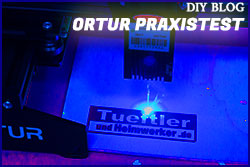Wow, now thats what i call good answer !!Thanks, man, for all this writing, much appreciated. Still, you are right: now when i read all this, i agree with you, that this project is "a bit" a mess...
True, i dont have exactly that kind of remote. I have several universal remotes (well, two, one of them brand Sony), will look maybe there are simlilar to yours in their tables. Thats for a start. If I will be not too lazy and in proper mood, maybe i will dive into programs code
In other hand, i start to think that easier will be to program what I need by myself than search endlesly around the Web. I already stumbled to this some time ago when I wanted to make thermometer, with 3-digits 7-segment LED modules output, with common cathodes, and all this with changable alarm temperature. But I think I can manage to programm PWM, but FFT... I doubt.
Still, Big Thank You for your explanation!!!
Best Wishes,
Juris from Lettland.








 Zitieren
Zitieren

Lesezeichen